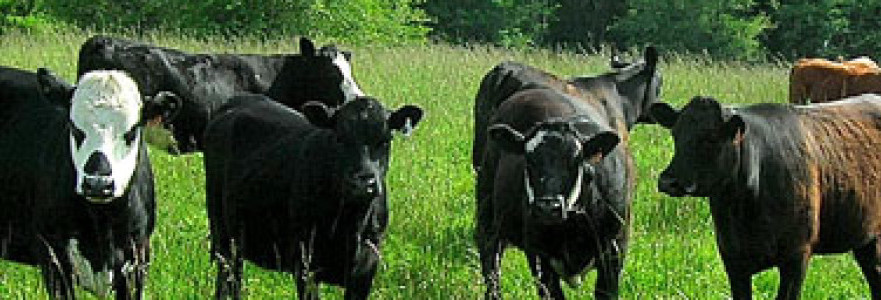We are taking orders for grass fed beef for 2023 delivery.
REAL Beef Eat Grass — Not Grains
How much space required?
As a general guide, 50 pounds of meat will fit in about 2.25 cu.ft. of cooler/freezer space. The empty freezer compartment of an average-sized home refrigerator will usually hold one-eighth of a beef (roughly 50-60 lbs.). Quantities larger than this will require a stand-alone freezer or another refrigerator-freezer. A stand-alone freezer will usually store meat better because it has the capability to store meat at a colder temperature.
How to Store?
It is recommended that custom-processed beef and pork be frozen before pickup. If you ask, your butcher may keep a portion of it fresh. If kept frozen continuously, meat technically will be safe indefinitely; however, for best quality use it within 9 to 12 months for beef,
Making Sense of Weighty Issues Live Weight vs. Carcass Weight vs. Finished Cut Weight?
Adapted from “Did the Locker Plant Steal Some of My Meat?” by Duane M. Wulf, Ph.D. Department of Animal and Range Sciences, South Dakota State University.
Turning a live animal into meat means removing a lot of the parts that aren’t edible, like the hide, feet, head, bones, and most of the innards. This happens in two steps:
- 1. When the animal is slaughtered, weight is lost from the animal’s live weight. What remains is called the “carcass weight” (sometimes also called “hanging weight”). The percentage of live weight that remains as carcass weight is called “dressing percentage.”
- 2. When the carcass is made into finished cuts, weight is lost from the carcass weight. What remains is called the “finished cut weight.” The percentage of carcass weight that remains as usable meat is called “carcass cutting yield.
To determine how much meat you should expect to take home from an animal, use the following calculation: Live Weight x Dressing Percentage x Carcass Cutting Yield = Pounds of Meat Average Dressing Percentages: 61% Beef cattle.Meat from a typical ½ beef (from a 1,000 ‐ 1,200 lb. live animal) consists of approximately: (see cut sheet)
14 T‐bone steaks (3/4″ thick)
14 rib steaks (3/4″)
8 sirloin steaks (3/4″)
8 round steaks (3/4″)
2 sirloin tip roasts (3 lbs.)
6 chuck roasts (4 lbs.)
4 arm roasts (3 lbs.)
2 rump roasts (3 lbs.)
8 packages of stew beef (1 lb.)
4 packages of short ribs (1.5 lbs.)
4 packages of soup bones (1.5 lbs.) - 80‐100 lbs. ground beef (Variety meats, if desired, such as heart, liver, tongue, and oxtail)
We are part of these organizations:
